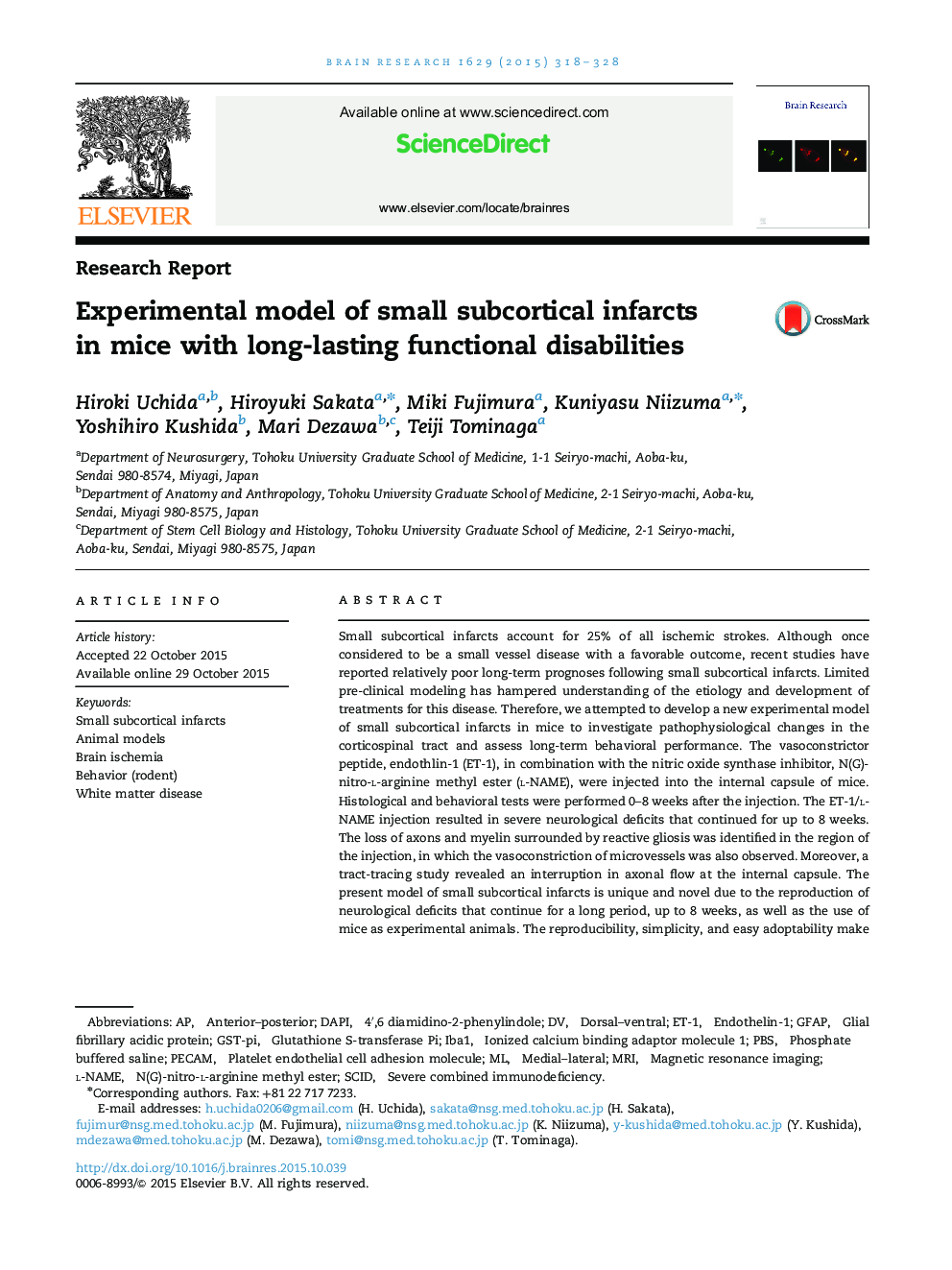| Article ID | Journal | Published Year | Pages | File Type |
|---|---|---|---|---|
| 6262791 | Brain Research | 2015 | 11 Pages |
â¢A new experimental model of lacunar infarcts is developed in mice.â¢Injection of ET-1 and l-NAME results in the loss of axons and myelin.â¢The present model shows severe neurological deficits continued for up to 8 weeks.
Small subcortical infarcts account for 25% of all ischemic strokes. Although once considered to be a small vessel disease with a favorable outcome, recent studies have reported relatively poor long-term prognoses following small subcortical infarcts. Limited pre-clinical modeling has hampered understanding of the etiology and development of treatments for this disease. Therefore, we attempted to develop a new experimental model of small subcortical infarcts in mice to investigate pathophysiological changes in the corticospinal tract and assess long-term behavioral performance. The vasoconstrictor peptide, endothlin-1 (ET-1), in combination with the nitric oxide synthase inhibitor, N(G)-nitro-l-arginine methyl ester (l-NAME), were injected into the internal capsule of mice. Histological and behavioral tests were performed 0-8 weeks after the injection. The ET-1/l-NAME injection resulted in severe neurological deficits that continued for up to 8 weeks. The loss of axons and myelin surrounded by reactive gliosis was identified in the region of the injection, in which the vasoconstriction of microvessels was also observed. Moreover, a tract-tracing study revealed an interruption in axonal flow at the internal capsule. The present model of small subcortical infarcts is unique and novel due to the reproduction of neurological deficits that continue for a long period, up to 8 weeks, as well as the use of mice as experimental animals. The reproducibility, simplicity, and easy adoptability make the present model highly appealing for use in further pre-clinical studies on small subcortical infarcts.
